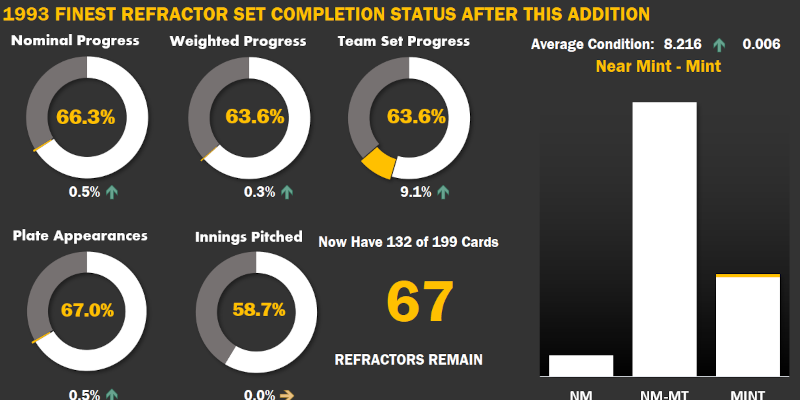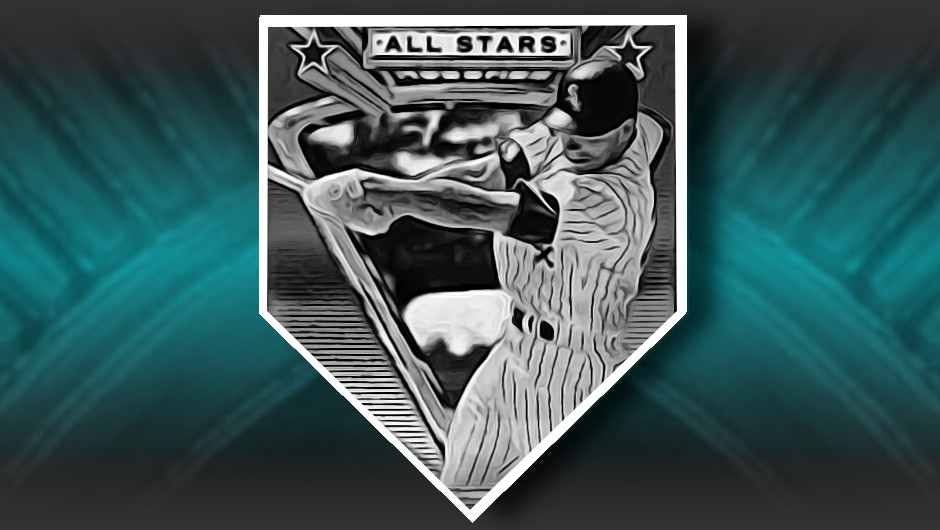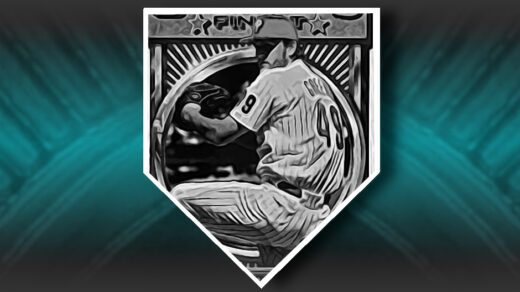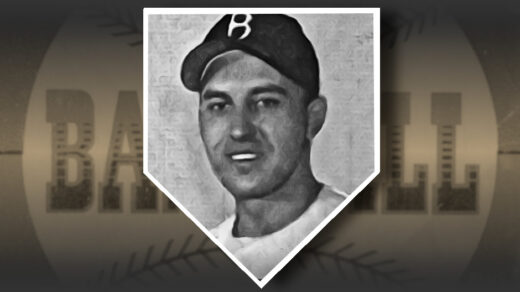The New York Yankees are team built on a tradition of winning and a willingness to pay up for top players. No where has this been more evident than in the storied center field of Yankee Stadium. Joe DiMaggio and Mickey Mantle headline a list that included several all-time greats. Rickey Henderson became a part of this when the Yankees sent pitching prospect Eric Plunk to the Athletics in 1984. While Henderson was busy stealing an average of 80 bases annually for New York, the Yankees were already busy planning for the future. That future was a 15-year old prospect tearing up Panamanian baseball named Roberto Kelly. By 1989 Kelly was ready for New York and Henderson was sent back to the A’s (amazingly for Eric Plunk).
Roberto Kelly was seen as an upcoming talent that could become the next great center fielder, provided he could address a high strikeout ratio and work on his throwing strength. He played every game of 1990 and generated more than 5 wins above replacement, a contribution sorely needed by a Yankees team routinely sitting near the bottom of the standings. Two years later he was in Cincinnati. What happened?
The Yankees had assumed Kelly would improve with additional major league experience and help the team win while doing so. It turned out that 1990 represented his best performance. In 1992 he was still playing well enough to hit a double in the All-Star game, though the Yankees’ front office was beginning to entertain the idea that Kelly wouldn’t make additional gains as he approached age 30. The Yankees traded Kelly, who was likely to garner a better paying contract, to the Cincinnati Reds for Paul O’Neill. O’Neill was seen by most as the less favorable player in the deal and was already 30 years old with a middling batting average. The Yankees, however, viewed his left-handed hitting as something that would improve pitching matchups across the entire lineup as well as free up space in the outfield for a harder-hitting rookie named Bernie Williams. Williams and O’Neill would go on to become key pieces of the late-90s Yankees resurgence.
Kelly played well for the Reds and the prevailing view at the time was the team had received the upper hand in the transaction. Cincinnati fans had been livid over a 1991 trade that sent Eric Davis to the Dodgers for pitcher Tim Belcher and this seemed to be a step towards fixing that mistake. Kelly was determined to make a new start with the Reds, going as far as to change his name to “Bobby.” The change lasted only one year, with the new name bringing up difficult conversations about anglicising Latin names after the lengths Roberto Clemente had gone through to use his name. Kelly became Roberto again in 1994, telling reporters, “that Bobby guy got hurt too much.”
Kelly was always seen as promising, but never topped his early performance. This potential was always attractive to other teams and lead him to play in eight different uniforms through the end of his career. It was the last of these, the Yankees, that he finally secured a World Series ring. A further comeback was attempted in 2002 and 2003, but teams became wary as his age grew and he tested positive for a banned substance in the 2002 Intercontinental Cup. Always a noted baserunner, his coaching advice was sought after his playing days ended. Coaching assignments with the Giants brought him another 3 rings. Today he is the manager of the Monterrey Sultans in Mexico.
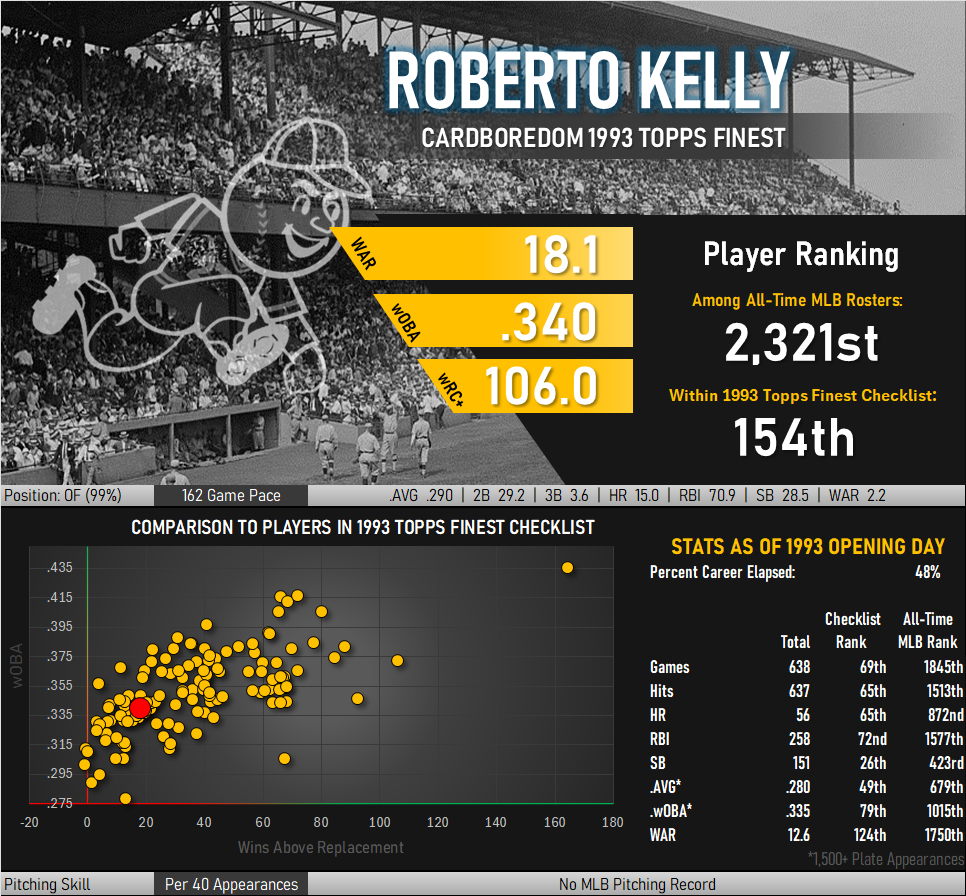
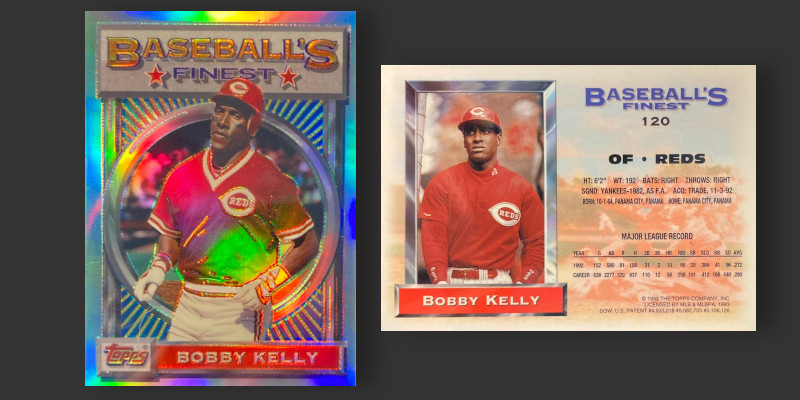
FUN FACT ABOUT ROBERTO KELLY: His wife is the sister of Texas Rangers’ slugger Juan Gonzalez. The Kelly family has ten children.
